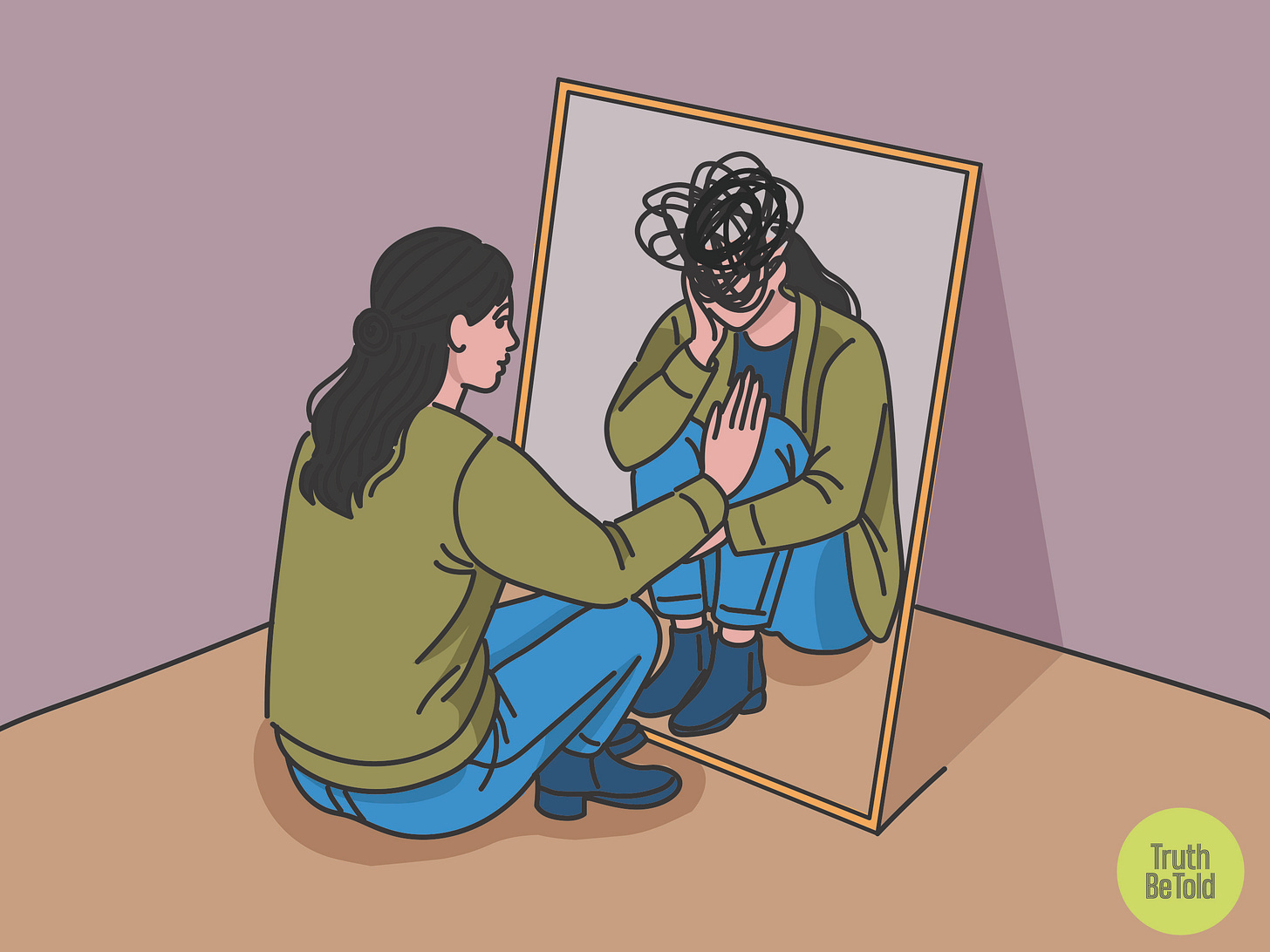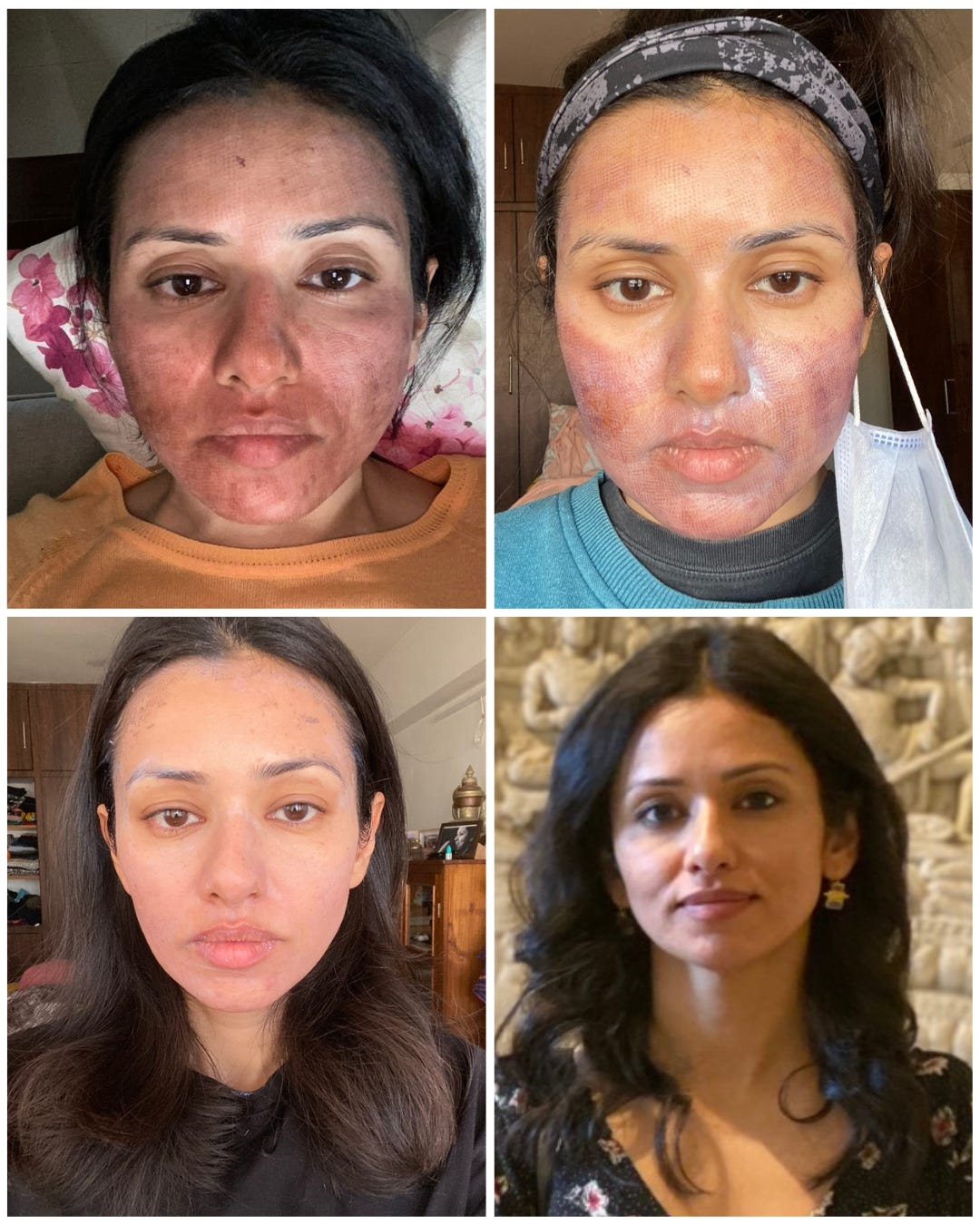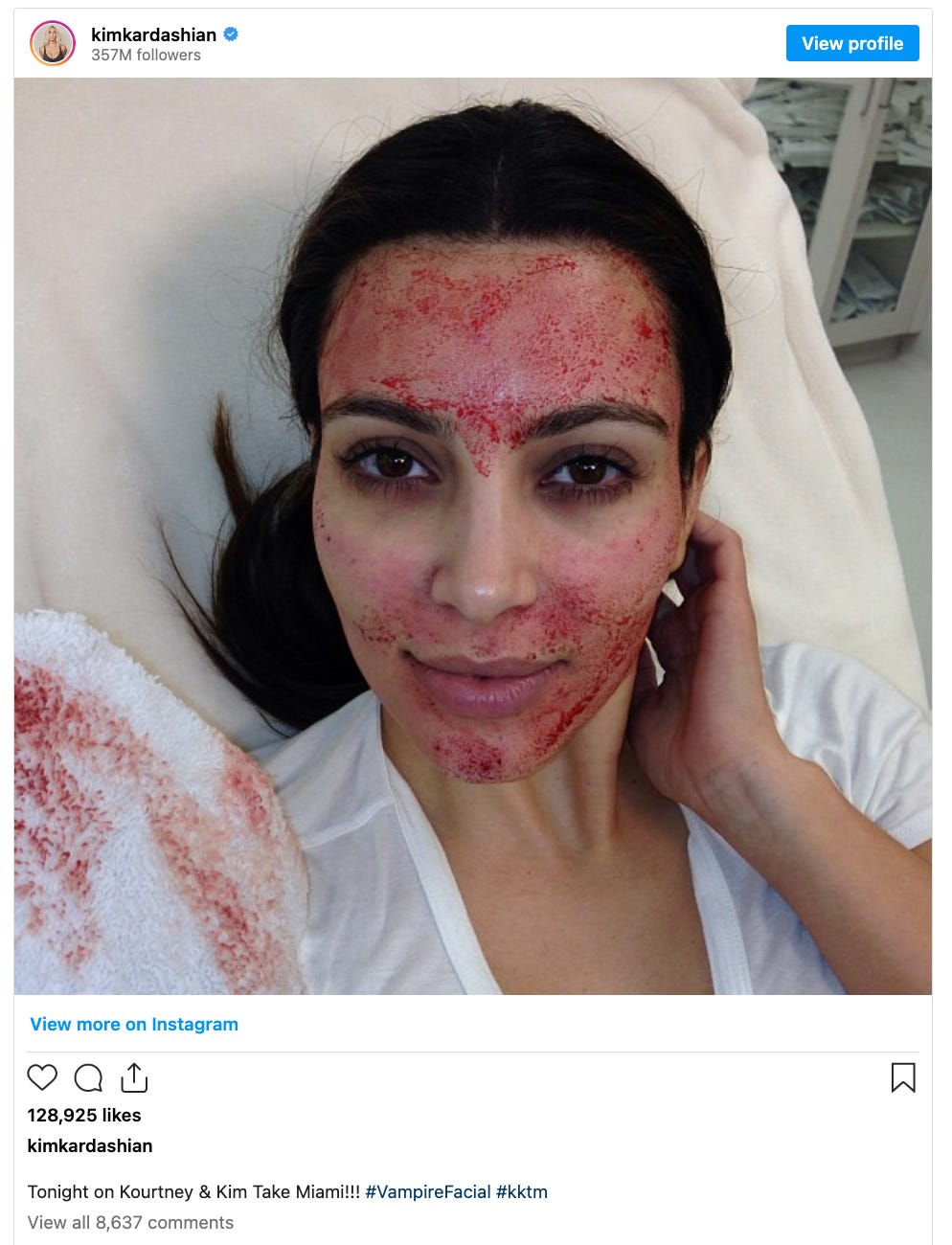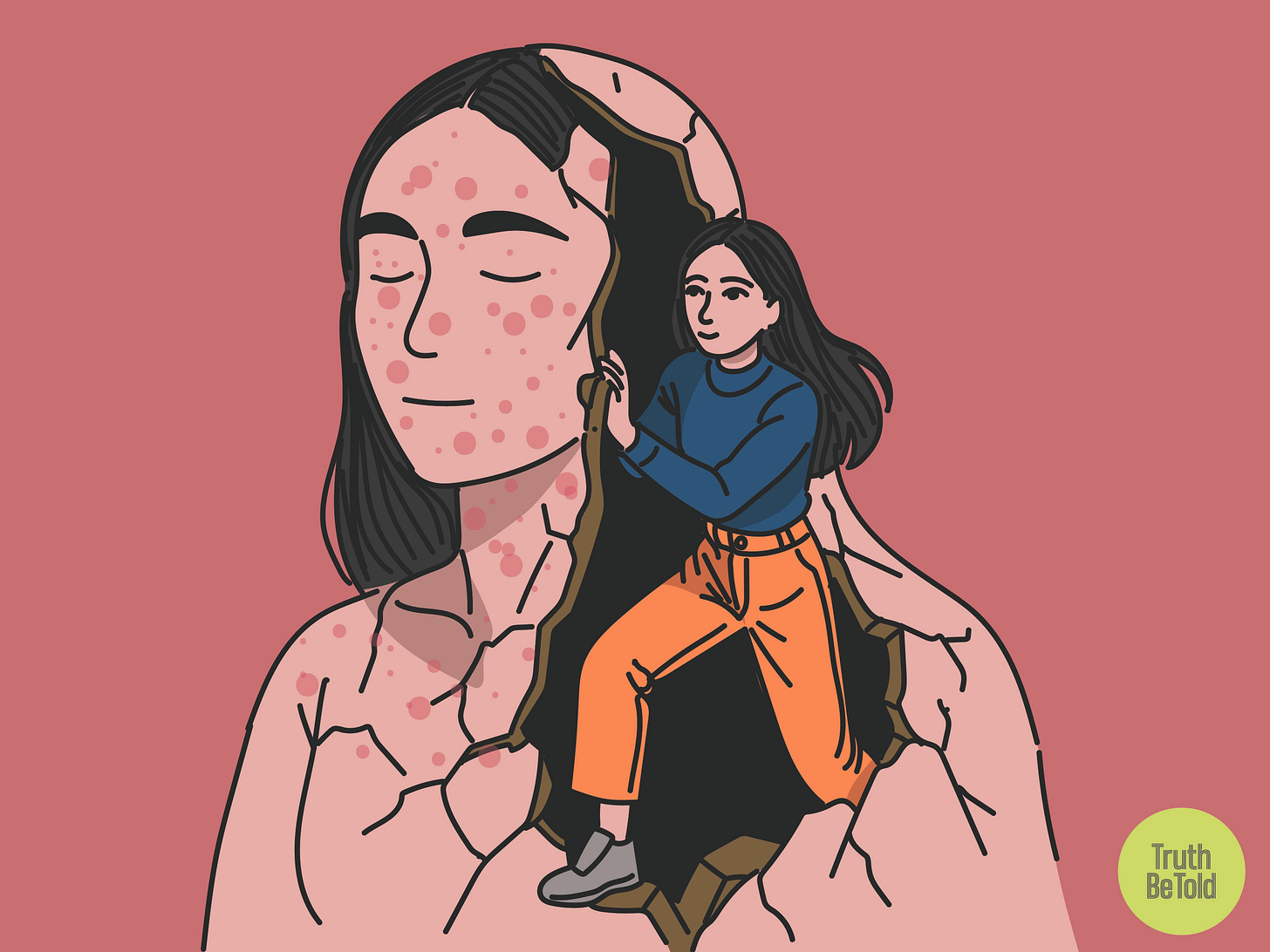How Treating My PCOS Hooked Me On Aesthetic Treatments
The most trustworthy source of food and
fitness journalism in the country.
Editor’s note: My favourite genre of personal essays lies where the writer exists in the dissonance between what they think they should do and what they actually do—and they let that tension live and thrive on the page, without resolving it and merely acknowledging genuinely hard situations.
Today’s piece falls exactly in that bucket, as Pallavi Pundir writes the story of how her medical necessity (PCOS treatment) turned into an aesthetic desire (anti-ageing). She identifies a society-level trap, yet can’t escape it because the same trap saved her. Do read!
Pallavi is an independent journalist based in Uttarakhand who frequently writes about gender justice, identity and politics from across South Asia. She can be found on Instagram and LinkedIn.
— Samarth Bansal (samarth@thewholetruthfoods.com)
I. The Crisis
I squinted against the glaring white light before my dermatologist’s assistant strapped on protective goggles over my eyes. With my vision inhibited, I made sense of the sounds around me.
“Ma’am, can I take a photo of your face?” the assistant asked me.
Sure, I said, but I hope you don’t upload it anywhere online. She reassured me that she wouldn’t and proceeded to take a photo before slathering cooling gel all over my face.
A few seconds later, the doctor walked in. “This is just the start,” she told me. “In a few months, you’ll start to like looking at yourself in the mirror again.” In the darkness of my vision, I grasped for hope in her voice.
This was in 2018. I was in that room because I had been struggling with PCOS acne – or pimples associated with the condition of Polycystic Ovarian Syndrome, a cluster of hormonal and lifestyle-related symptoms – for over eight years, when a combination of new-found financial freedom in my early 20s, unhinged lifestyle and chronic stress of working in a newsroom erupted into a full-blown hormonal disorder.
As a consequence of insulin resistance and elevated testosterone, weight gain became an unending nightmare along with changes on my face. I weighed 15 kilos above my ideal BMI, had hirsutism (male-pattern facial hair) and cystic acne (boils and lesions — not your regular pimple) all over my face. Every day, I’d wake up to clusters of angry pimples, threatening to pop at the slightest graze of a towel. And every day, I’d try to make sense of the crisis and fail at it.
The medical response was dismal: doctors put me on weight loss medication and diabetes pills, then told me everything would resolve once I got married and had children. Most doctors fixate on chances of fertility over quality of life for women.
What makes it worse is that PCOS is a lifestyle disease—like diabetes—which means it can only be managed, not eradicated. And it doesn’t help that PCOS remains poorly understood. One in five Indian women have PCOS, yet a large number of cases are still late or misdiagnosed.
All of this took a psychological toll. It chipped away at my sense of self-worth. There came a point when I stopped looking at myself in the mirror, as PCOS had left me with every type of skin damage dermatologists treat: bumpy texture from cystic acne to unwanted facial hair. My face had become a catalog of problems that aesthetic medicine exists to solve.

In a country like India, a woman’s body is often not her own. So in public spaces, absolute strangers stopped me on the streets to ask me what’s wrong with my face. Aunties, shopkeepers, even people I met at work events piled a barrage of queries and judgements. It was especially stressful while being a journalist since my job was people-facing, and the prospect of meeting people—which was my only job!—gave me anxiety every week.
When I wasn’t ugly-crying about my encounters with strangers, I was an agent of misadventures, specifically relating to skincare misinformation. I’d put toothpaste on my acne, which created darkened patches, or wax my face over the advice of my flatmate, which led to burns and hardened skin. When I’d visit home, my mother fed me Safi—an Ayurveda potion sold as a blood purifier—and slathered my face with besan ubtan (face pack made of chickpea powder) and multani mitti (fuller’s earth).
All my fumbling with toothpaste and over-scrubbing was actually the same desperate instinct that would later lead me to professional treatments. All I needed were the right tools.
II. The Discovery
This is how achieving beauty—or rather, the idea of it—got to me. And served as my introduction to aesthetic treatments, which includes anything from a laser treatment to derma fillers and botox to give your skin that quick lift, volume or contour, and are now akin to getting annual checkups.
Aesthetic treatments went mainstream in the last decade, fuelled by the K-beauty boom from South Korea, the mecca of cosmetocology tourism, where influencers fly in from far and wide to get a jab or two for the so-called glass skin, a K-beauty term for impossibly dewy, poreless skin.
So when I showed up at my dermatologist’s doorsteps in Mumbai in 2018, it came from a deep, dark hole of desperation, rather than an informed decision. I felt I’d already seen it all: misdiagnosis and acceptance of the syndrome like an alien invasion. This could fail too, I thought to myself, Don’t be too hopeful.
But seven months later, after a series of treatments, when I looked at the mirror, for the first time in years, I didn’t flinch. I started seeing the one thing I never saw before: results. The aesthetic treatments worked, and so began my calling as an aesthetic treatment evangelist.
I’d be lying if I say only the treatments helped though. Over the course of those seven months, I simultaneously took to long-distance running; altered my diet to remove gluten, dairy and sugar; and became a supplement-guzzling gym rat. This was all on the advice of my dermatologist who told me that external PCOS symptoms go away only once you heal from the inside.
What I learned in the process is that every aesthetic treatment follows the same brutal logic: you have to hurt your skin to heal it. It sounds counterintuitive, but damaged skin won’t fix itself. So treatments force it to. Chemical peels burn away the bad layers. Needles create tiny wounds that trigger your body’s repair mode. Lasers literally destroy problem areas so fresh skin grows back. The worse your skin looks immediately after—red, swollen, sometimes bleeding—the better it will look once it heals.

Every other weekend, I’d book an appointment for chemical peels, which exfoliates the skin with the chemicals best suited for your skin type. At least once a year, I get microneedling done, where the skin specialist punctures my face with needles to boost collagen and skin tissue to resolve issues of scarring. My facial hair is gone from laser hair removals. I also rectify my acne scarring and hyperpigmentation with “laser whitening”, a non-invasive laser therapy that reduces dark spots. Over the years, I got educated about retinoids and chemical exfoliants as part of my daily skincare routine.
I also put my faith in what are called regenerative treatments. The most famous is platelet-rich plasma (PRP) therapy, made notorious when billionaire celebrity Kim Kardashian posted a photo of her face smeared in blood in 2013.

That’s the boring but accurate terminology for what is otherwise known as a “vampire facial”. Back then, the world wasn’t ready for it. Today, it’s my go-to fix, which requires the aesthetician to draw my blood, isolate the platelet-rich plasma and then inject it back to my skin.
Another favourite is the CO2 laser treatment, which uses beams of laser to create controlled burns on skin to stimulate collagen and improve skin texture. This one is painful though – it takes up to 10 days to heal and in my case, my face swelled up too. These treatments take the fundamental idea to its most extreme: using your own blood or literally burning your face to force the most dramatic regeneration possible. And once the pain subsided, I saw my 20s skin dreams manifest.
III. The Dependency
Clearing my skin, however, didn’t just change how I looked. It changed how I saw myself entirely. I’d forgotten what I really looked like. Years of being told my face is all wrong messed me up in ways more than one. It affected the way I interact with people—where I’m hostile and wary, by default—while also hampering my self-confidence that impacts my work too. I’m acutely aware of my nagging anxiety if I don’t book my monthly aesthetic appointment. In my mind, if I don’t, I’d go back to my PCOS face.
Or rather, ugly. Ugly—the cultural construct that denotes something is out of place, or not normal. I know I’m hooked. But my story isn’t unique: it’s exactly how the system is designed to work.
The economy of ugly is a vast, lucrative market that thrives on the significant investment of time, money, energy and labour of women in pursuit of not just beauty, but also acceptance. In a culture where commenting on people’s looks comes before checking in on their well-being, the $532 billion-global beauty industry panders to manufactured insecurities and exploits the gendered gaps in health and medicine. An Indian study found that women make up 85.7 percent of patients for aesthetic treatments in India. And when society rewards “pretty privilege”—both online and offline—PCOS just exacerbates what is already a grim attitude most Indian women have towards body image.
The industry’s genius is in expanding the definition of what needs fixing. For me, this meant that once my PCOS acne-related insecurities were assuaged, then came the 30s, and along with it, a renewed scrutiny of everyone around me reminding me, this time, of my age. This is how medical necessity became a cosmetic choice.
The result? I gave in to a rather expensive treatment called Morpheus8, yet another regenerative treatment I mentioned earlier, which is recommended for those with fine lines and wrinkles—clear indicators of natural ageing. The advanced treatment involved microneedling and radiofrequency, which, again, involves puncturing the face with needles. It reduced acne scars and made my skin’s texture better. But I knew I could have lived without it.
Was I concerned about my impulse decision? Yes. Did I regret it? I’d admit, not so much.

Sure, ideal beauty doesn’t exist. But in my journey of fixing my skin—and by extension, my self-confidence—I’ve reconciled to my dual desires of interrogating the exploitative beauty culture, while falling for it too. With a healthy wariness of botched treatments and malpractices in the industry, I know it’ll be a long path to truly untangle myself from this obsession.
Perhaps it’ll start from unlearning the internalised social construct of beauty. Perhaps it’ll come with time. Or, maybe, just maybe, it’ll come with self-acceptance. I wonder what treatment there is for that.
PS: Here is a short feedback form to help us understand how we’re doing. Would you please share your thoughts? Link here. Thank you so much!
Just Dropped
A beginner’s guide to millets
A masterclass on managing caffeine: How much coffee is too much?
Are energy drinks bad for you?
Do You Need Collagen Supplements?
Fat loss vs weight loss : How to lose fat instead of weight
How to improve gut health?
Is your body ageing gracefully?
Letters to Editor: Reader Response 01
